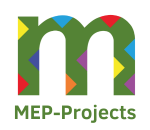- 9 October, 2024
- Francisco Gallego
- Comment: 0
- News

THE ROLE OF THE PROJECT DESIGNER IN MEP PROJECT OPTIMISATION

El Project Designer se ha convertido en una figura esencial dentro de los proyectos MEP, al ser responsable de implementar tecnologías avanzadas que mejoran la eficiencia, precisión y sostenibilidad. En MEP-Projects, el diseño inteligente y el uso de herramientas como la automatización y el modelado BIM permiten gestionar cada fase del proyecto de manera más ágil y efectiva, asegurando el cumplimiento de las normativas más estrictas y optimizando los recursos disponibles.
Process Automation and Optimisation
The Project Designer uses automation solutions to minimise manual intervention in repetitive tasks, such as report generation or facility tracking. Thanks to systems based on artificial intelligence, decisions are optimised in real time, improving operational efficiency and allowing early detection of problems that could affect the project schedule or quality. This predictive approach ensures a dynamic allocation of resources, adjusting to changing project needs and reducing disruptions.
BIM: Accuracy and Collaborative Management
Building Information Modelling (BIM) is a key tool for the Project Designer, as it facilitates the creation of detailed three-dimensional models that integrate all the information from MEP systems. This not only improves design accuracy, but also allows multidisciplinary teams to work in a collaborative environment. The Project Designer ensures that design modifications are implemented in real time, ensuring that necessary changes are reflected quickly and efficiently. In addition, the use of BIM allows for simulations that optimise the performance of systems under real-world conditions prior to the construction phase, thereby reducing problems on site.
Energy Efficiency and Sustainability
In a context where sustainability is increasingly crucial, the Project Designer plays a key role in the integration of energy efficiency solutions. Through analysis and monitoring software, HVAC and electrical systems are optimised to maximise energy savings, ensuring compliance with environmental regulations. The Project Designer uses BIM not only for design, but also to simulate and analyse the energy performance of buildings, ensuring that the carbon footprint is minimised and operating costs are optimised over the life cycle of the project.
Efficient Coordination between Disciplines
Coordination between different disciplines is one of the biggest challenges in MEP projects. The Project Designer leads the integration of collaborative platforms, where engineers, architects and project managers work together, using the same databases and BIM models. This integration ensures that all teams work with up-to-date and consistent information, reducing the risks associated with communication errors and ensuring a more efficient workflow.
Continuous Innovation and Looking to the Future
Project Designer is not only focused on optimising the present, but also on integrating new technologies such as artificial intelligence and machine learning. These tools will make it possible to predict the behaviour of systems more accurately and optimise performance in real time. As these technologies evolve, the Project Designer will be instrumental in ensuring that MEP-Projects continues to be at the forefront of technological innovation, offering customised and sustainable solutions to the most complex challenges.
Made by Lorena Gallego (Project Designer)

